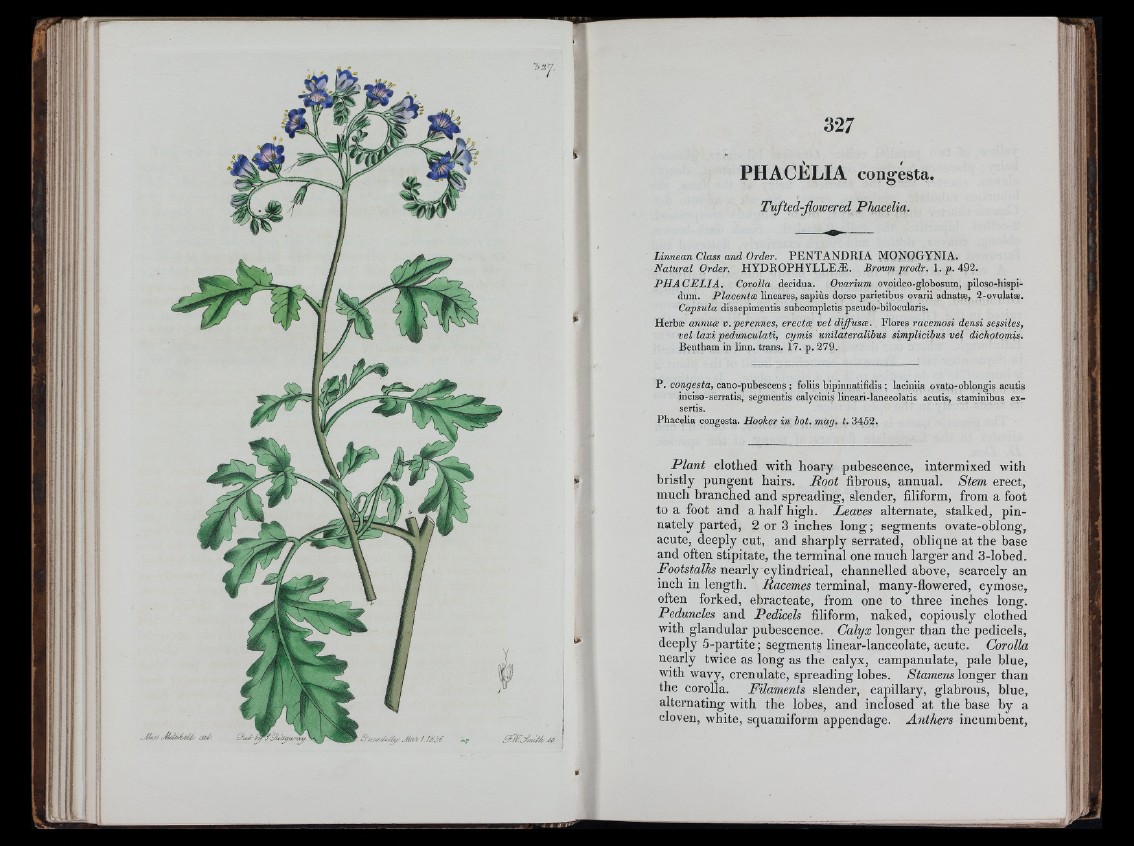
i i
l |j. LI . •
r (
Ii M
(Ili
■ i ii ; i ••
iii : :
ìH
i; fti
i;H .
PHACELIA congesta.
Tufted-flowered Phacelia.
Linnean Class and Order. PENTANDRIA MONOGYNIA.
Natural Order. HYDROPHYLLEAi. Brown prodr. I. p. 492.
P H A C E L IA . Corolla decidua. Ovarium ovoideo-globosum, piloso-hispi-
dum. Placenta: lineares, sapiùs dorso parietibus ovarii adnatse, 2-ovulatae.
Capsula dissepimentis subcompletis pseudo-bilocularis.
Herba; annure. v.perennes, erectce vel diffusce. Flores racemosi densi sessiles,
vel laxi pedunculati, cymis unilateralibus simplieibus vel dichotomis.
Bentbam in linn, trans. 17. p. 279.
P. coíi^esía, cano-pubescens ; foliis bipinnatifidis : laciniis ovato-oblongis acutis
inciso-serratis, segmentis calycinis lineari-laneeolatis acutis, staminibus exsertis.
Pbacelia congesta. Hooker in bot. mag. t. 3452.
Plant clothed with hoary pubescence, intermixed with
bristly pungent hairs. Root fibrous, annual. Stem erect,
much branched and spreading, slender, filiform, from a foot
to a foot and a half high. Leaves alternate, stalked, pin-
nately parted, 2 or 3 inches lo n g ; segments ovate-oblong,
acute, deeply cut, and sharply serrated, oblique at the base
and often stipitate, the terminal one much larger and 3-lobed.
ZhofeifaZib nearly cylindrical, channelled above, scarcely an
inch in length. Racemes terminal, many-flowered, cymose,
often forked, ebracteate, from one to three inches long.
Peduncles and Pedicels filiform, naked, copiously clothed
with glandular pubescence. Calyx longer than the pedicels,
deeply 5-partite; segments linear-lanceolate, acute. Corolla
nearly twice as long as the calyx, campanulate, pale blue,
with wavy, crenulate, spreading lobes. Stamens longer than
the corolla. Filaments slender, capillary, glabrous, blue,
alternating with the lobes, and inclosed at the base by a
cloven, white, squamiform appendage. Anthers incumbent,